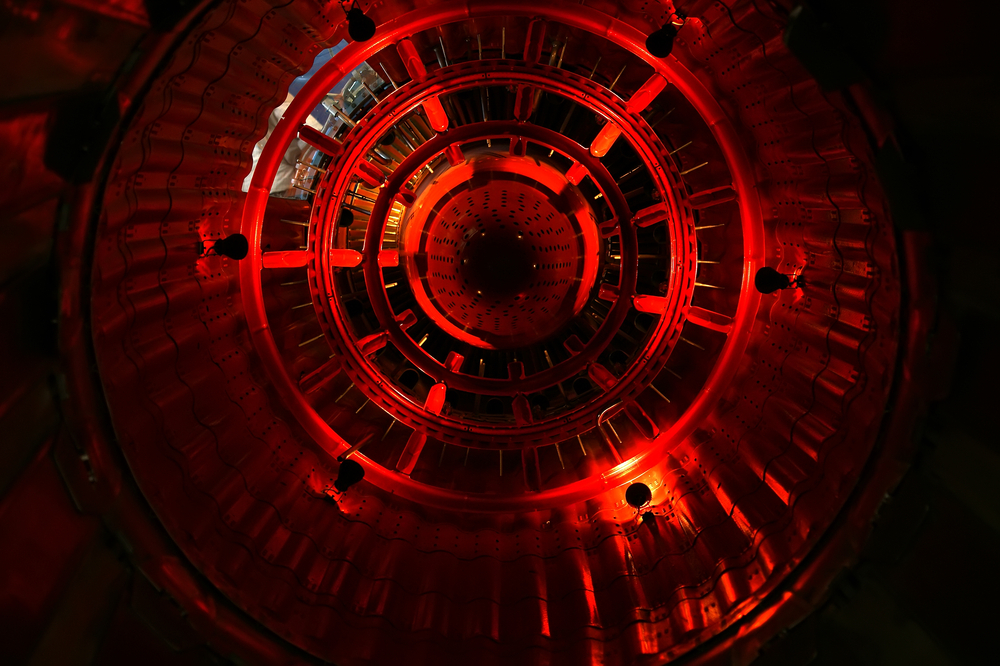A former NASA engineer, Dr. Charles Buhler, has announced a groundbreaking discovery that could revolutionize space travel. He claims to have developed an engine that creates thrust without using traditional propulsion methods. This so-called “anti-gravity engine” could potentially overcome Earth’s gravity, marking a significant milestone in human space exploration.
The Anti-Gravity Engine

Dr. Charles Buhler, who previously worked at NASA’s Electrostatics and Surface Physics Lab, presented his findings at the Alternative Propulsion Energy Conference. His team, which includes engineers from NASA, Blue Origin, and the Air Force, has been researching this technology for over a decade.1 The engine harnesses specific differences in electric fields to generate a force strong enough to move objects, seemingly defying the force of gravity.
Read More: Carbon Dioxide Increase Is Fastest It Has Ever Been In Last 50,000 Years
Breaking the Laws of Physics

One of the most controversial aspects of Buhler’s engine is that it appears to violate the conservation of momentum, a fundamental principle of physics outlined in Newton’s First Law of Motion. This has led to the technology being labeled as an “impossible drive” by skeptics. Despite this, Buhler’s credentials and the involvement of reputable scientists have given his claims a degree of credibility.
The Potential Impact

If Buhler’s anti-gravity engine proves to be functional, it could drastically reduce the costs of space travel by eliminating the need for fuel. This would not only make space missions more affordable but could also pave the way for the colonization of other planets.2 The ability to travel through space without relying on conventional propulsion systems could unleash a new era of exploration and discovery.
Historical Precedents

Buhler’s gravity engine is not the first attempt at creating a reactionless drive. In 2001, British engineer Roger Shawyer introduced the EmDrive, which purported to create thrust by bouncing microwaves inside a reflective cone. Initial tests by NASA’s Eagleworks Team suggested some promise, but subsequent studies, including those at the University of Dresden, found that the EmDrive’s results were likely due to measurement errors.
Read More: Quantum Teleportation From Space Achieved by China!
Independent Verification Needed

Despite the excitement surrounding Buhler’s claims, independent verification is essential before the technology can be widely accepted. The scientific community remains skeptical, given the history of similar devices that ultimately failed rigorous testing. Buhler himself acknowledges that his work is unaffiliated with NASA and emphasizes the need for further experimentation by other scientists.
The Future of Anti-Gravity Technology

While the prospect of an anti-gravity engine is tantalizing, it will likely be decades before such technology is ready for practical use in space missions. The rigorous testing required to confirm its viability means that, for now, space enthusiasts should temper their expectations. However, the potential implications of Buhler’s discovery continue to inspire both hope and caution within the scientific community.
Conclusion

Dr. Charles Buhler’s claim of developing an anti-gravity engine represents a bold step towards overcoming one of humanity’s greatest challenges: Earth’s gravity. While the technology promises significant advancements in space travel and exploration, it must undergo extensive testing and verification. Only time will tell if Buhler’s engine can truly defy the laws of physics and usher in a new era of human space exploration.
Read More: Meet the family on a mission to restore the desert ecosystem

